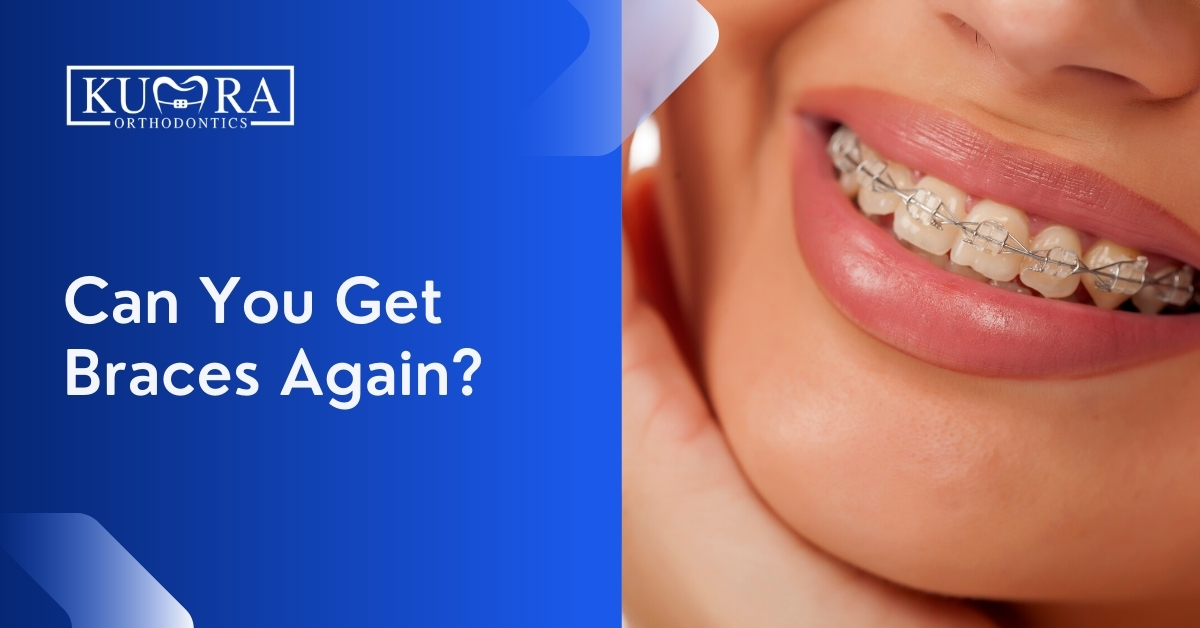Dental braces are a common orthodontic treatment that can help improve the alignment of teeth. They are typically recommended for children and teens but can be used for adults as well. While braces can be an effective way to achieve a straighter smile, they are not a permanent solution. In some cases, people may need to have their braces removed and then re-apply them at a later time. Moreover, if you don’t wear your retainers on a regular basis, your teeth may shift again over time. As a result, you may find yourself in need of braces for the second time in the future.
If you are considering getting braces again, here is what you need to know.
How do Braces Work?
Braces function by applying gentle pressure to the teeth and jaws to move them into an ideal position Placing pressure on teeth is facilitated by the use of brackets bonded to teeth that hold an archwire in place. Eventually, the teeth will migrate into their proper positions.
Types of Braces
Several different types of dental braces, including classic metal braces, ceramic braces, lingual braces, and Invisalign, may be advised to improve tooth alignment. Each type is connected with a distinct set of benefits and drawbacks that must be considered while determining the optimal treatment option for specific patients.
Metal braces
Traditional braces have evolved since their inception and are now lighter in weight and structure than they once were. They are composed of stainless steel of the highest quality and feature metal brackets that are cemented to each tooth. The brackets are connected to one another by a thin archwire, which exerts pressure on the teeth to gradually move them into the proper position. Your orthodontist will replace the elastic ligatures or o-rings that link the archwires to the brackets each time they tighten the braces.
Ceramic braces
Ceramic braces are comprised of a transparent, tooth-colored ceramic material. Ceramic braces are less apparent than metal braces and offer an economical alternative to metal braces. However, you should be aware that these braces are slightly larger than metal braces and can stain based on your diet and brushing habits. They are not for everyone, but they are nevertheless considered a vital orthodontic instrument.
Self-ligating braces
Self-ligating braces are an innovative type of metal braces that eliminate the need for O-rings and elastics. They retain the wire and lock it in place, similar to a gate. Self-ligating braces utilize a sliding mechanism to hold the wire, allowing teeth to move more freely, swiftly, and comfortably.
Self-ligating braces allow you to maintain optimal dental health and hygiene during treatment since they lack the O-rings and elastics that attract and accumulate plaque. They are designed to be unobtrusive, comfortable, and simple to maintain.
Lingual braces
The major distinction between lingual and conventional braces is the location of the braces. Lingual braces contain all the same components as conventional braces and are frequently made of stainless steel, exactly like metal braces.
However, instead of being bonded to the front of the teeth, lingual braces are bonded to the rear. Lingual braces are termed hidden braces since they are virtually undetectable to others; yet, they are an excellent option for those with severe orthodontic problems. It is important to note that lingual braces take longer to correct teeth and are more complicated than regular braces.
Invisalign
Invisalign is a transparent aligner that can be used as an alternative to metal braces. This incorporates a selection of custom-made, clear plastic aligners that resemble mouth guards. They are removable for eating and cleaning, and are replaced every two weeks with a fresh set. Each subsequent aligner takes the teeth-straightening process one step further.
How long do braces take the second time?
Fortunately, obtaining braces for the second time will go much more smoothly than the first because your face structure has already matured. Adult treatment typically takes six months to a year to complete.
Read More: Understanding How Long Your Braces Will Take
Needing an orthodontic appointment?
Visit Kumra Orthodontics Washington, DC or Kumra Orthodontics Stafford, VA, and request an appointment with us!
8 Reasons to Have Braces Again
The following are the reasons you should consider having braces again:
Accidents, trauma and tooth loss
It is a huge concern if you lose a tooth in an accident or because of tooth decay, infection, cracks, or gum disease. In addition, having a gap in your teeth will cause your other teeth to shift into position. Any damage to the front teeth can significantly impact your teeth and smile, as can any injury to the back teeth.
An orthodontist can sometimes recommend an artificial replacement tooth, a dental plate from your dentist, or an implant-supported space maintainer.
Improves your long-term dental health
Consider the health consequences of misaligned teeth in addition to the appearance. Tooth fracture is more likely when teeth are crooked. Tooth breakage is more likely when your jaw, muscles, and teeth are under additional stress due to an improperly positioned bite or misaligned jaw bones.
Another disadvantage of crowded and crooked teeth is the difficulty in cleaning all of the crevices. This raises the possibility that harmful microorganisms will linger, hence increasing the risk of tooth decay, cavities, and gingivitis.
Read More: Health Benefits of Braces You Should Know About
Correct bruxism
Bruxism is a condition where a person grinds or clenches their teeth. It can lead to tooth wear, headaches, and jaw pain. Braces can correct bruxism by correcting the alignment of the teeth. This will help to prevent tooth wear and protect the teeth from grinding and clenching.
Unexpected growth
It is also possible that you will need braces again if you have unexpected growth. Getting braces as a teenager or preteen is an excellent approach to ensure that your child’s growth is on track. However, it is possible that if growth continues and accelerates in an unanticipated direction, you could end up with crookedness, spacing, or misalignments that require additional treatment.
In other instances, the teeth shift spontaneously throughout time, potentially due to the structure of the jaw changing or the eruption of a wisdom tooth.
Not wearing retainers
It is common for teeth to return to their original position once braces are removed. Retainers, either fixed or removable, are provided by your orthodontist or dentist to avoid this. If you don’t wear your retainers, your teeth could shift again, leading to unpleasant results.
You have to wear your retainers regularly or for as long as suggested to maintain the treatment effectiveness.
Visibly crowded teeth
Your teeth can move even if you had braces when you were a teen. An adult set of braces may be a viable option if your teeth are misaligned. When your teeth are crowded, it isn’t easy to brush and floss them effectively. Plaque and tartar can build up, causing gum disease, tooth damage, and other dental problems.
How Much Does it Cost to Get Braces Again?
The cost of braces can vary depending on a number of factors, including the type of braces you choose and the severity of your bite. However, in general, the cost of getting braces again will be lower than it was the first time around. This is because you will likely only need to wear them for a shorter period of time, and your teeth will have already been straightened to some extent. The exact cost will depend on your individual situation, but you can expect to pay anywhere from $3,500 to $8,500.
How to Care for Your Braces
Regardless of what stage of treatment you’re currently in, it’s critical to maintain appropriate oral hygiene. It’s important to brush, floss, and rinse your mouth with mouthwash to keep your teeth and gums healthy. Tooth decay can be prevented if sugar consumption is restricted, particularly in soft drinks and snack foods.
You should also visit the dentist every six to twelve months. for regular checkups, professional tooth cleaning, and any other necessary dental maintenance.
Read More: How to Take Care of Adult Orthodontic Braces
Consult with Kumra Orthodontics to learn more about getting braces again
If you’re one of the many adults out there who need braces again, don’t worry – you have options. Traditional braces are no longer your only choice – invisible braces are a great alternative that will make your treatment more comfortable and less noticeable. Kumra Orthodontics can help you choose the best option for your needs and get you started on the path to a straighter smile. Contact us today to learn more about getting braces again!



